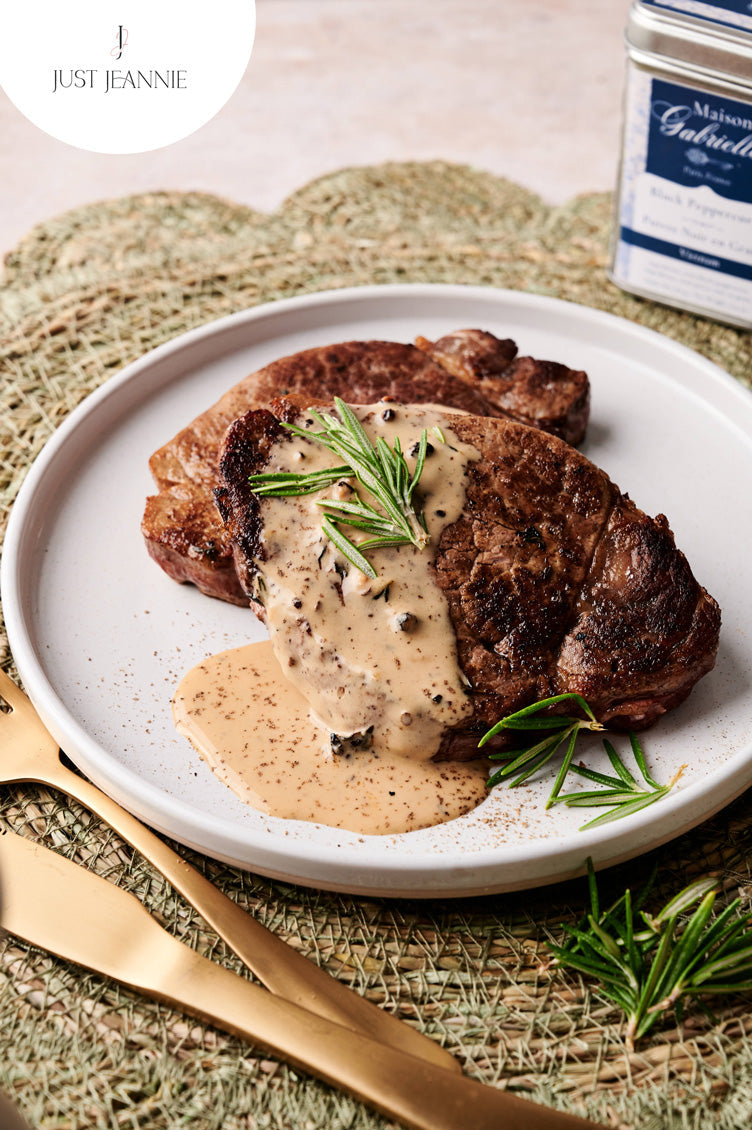
Coriander is a truly ancient spice. It appears in Egyptian documents dated to 1550 BCE, and some archeological evidence suggests that humans may have been cooking with coriander as far back as 8,000 years! Take a closer look at the tiny coriander seed and you’ll see why. With its lemony fragrance and sweet, earthy flavor, coriander is a versatile, intensely aromatic workhorse for the kitchen, and it deserves a spot right next to your black pepper.
The plant that produces coriander seeds—Coriandrum sativum—is a member of the carrot family. Its fleshy taproots are pounded into curry paste in Thailand, and the fresh leaves are picked for another beloved ingredient: cilantro. Coriander “seeds” are actually tiny dried fruits. Originally native to western Asia, coriander is now grown through the Mediterranean, North Africa, the Middle East, and all the way east to China. It’s no surprise then that coriander appears in recipes from all of these regions.
You can find whole coriander seeds in many ethnic markets, as well as online from spice specialists like Burlap & Barrel and Penzeys. Buying whole seeds to grind yourself is well worth it: pre-ground coriander loses its flavor quickly, especially the lemony notes that make the spice so beloved around the world.
The particular flavor of coriander depends on how you use it. When whole, coriander seeds add a warm citrus character to pickle brines, bread doughs, soups, barbecue rubs, and even some styles of Belgian beer. The whole seeds also add a nice crunch, much like similarly sized whole peppercorns.

Grinding coriander brings out nutty, earthy flavors that add a spicy musk to curries, stews, and marinades. You can adjust the size of this grind with your FinaMil’s Pro Plus pod; a coarse grind is ideal for rubs and stirring into olive oil to sop up with bread. Use a fine grind setting for curry powders and general cooking. Some coriander recipes call for roasting the whole seeds in a dry pan before grinding to intensify their flavor. Roasted coriander seeds are especially nutty and savory. Their burnished flavor is a perfect match for coating roasted vegetables or a spicy seafood curry.
Coriander pairs well with other spices and herbs in the carrot family, which includes cumin, anise seed, fennel seed, parsley, and dill. It’s also brilliant with black pepper, adding an intriguing aroma to pepper’s warming spice. Try grinding the two together for an all-purpose seasoning!

This recipe by British cookbook legend Jill Norman brings coriander and black pepper together in an easy roast pork dish from Cyprus called Afelia. We think it’ll convince you to keep coriander front and center in your kitchen.
Afelia (Greek-Cypriot Braised Pork)
Recipe by Jill Norman
Serves 3 to 4
- 1½ lb pork loin, cut into 1-inch cubes
- 2 tablespoons olive oil
- Salt
- Freshly black ground pepper
- 1 onion, sliced
- ½ cup red wine
- 1 tablespoon coarsely ground or chopped coriander seeds
In a large lidded pan, heat the oil on high. When it shimmers, put the pork in the pan and brown the meat on all sides. Season well with salt and freshly ground black pepper.
When the meat is well browned, remove it to set aside. Reduce the heat to medium and add a tablespoon of oil if the pan is dry, then add the onion. Fry the onion until it softens and turns golden, about 10 minutes, then set aside.
Return the pork to the pan and add the wine. Bring the liquid to a boil, then cover and reduce to a simmer for 20 minutes. Return the onions to the pan and stir in the coriander seeds. Replace the lid and simmer until the pork is tender and much of the liquid has reduced, 20 to 25 minutes. Serve afelia with rice or bulgur wheat.
Coriander photo by Mockupo on Unsplash. Photo of coriander plant by shifa kaynat on Unsplash.





















